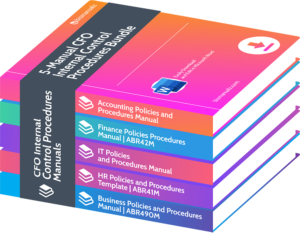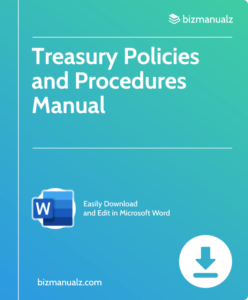What are CFO Treasury Management Solutions?

Attention CFOs! Are you struggling to effectively manage your company’s finances? Do you find yourself constantly seeking more efficient ways to handle treasury management? Look no further. In this article, we will discuss the essential things that every CFO should know about treasury management solutions and how they can benefit your company. What should a CFO know about treasury management solutions?
What Is Treasury Management?
Treasury management is the strategic management of a company’s financial assets, investments, and cash flows. This involves monitoring and optimizing the organization’s liquidity, risk, and financial performance.
The main goal is to ensure that the company has sufficient funds to meet its obligations while also maximizing returns on any extra funds.
Treasury management covers areas such as:
- cash management
- working capital management
- risk management
- financial planning
By implementing efficient treasury management solutions, CFOs can improve cash visibility, mitigate risks, simplify processes, and make well-informed financial decisions to support business growth and profitability.
What Are CFO Treasury Management Solutions?
As a Chief Financial Officer, it is crucial to have a deep understanding of treasury management solutions and their role in the financial operations of a company. Treasury management solutions encompass a wide range of financial services and tools that help businesses manage their cash flow, risk, investments, debt, and liquidity.
In this section, we will discuss the key components of treasury management solutions, including cash management, risk management, investment management, debt management, liquidity management, payment management, and reporting and analytics. By the end, you will have a comprehensive understanding of what treasury management solutions entail and how they can benefit your organization.
1. Cash Management
Cash management is an essential aspect of treasury management, ensuring efficient control and optimization of a company’s cash flow. To successfully manage cash, CFOs should consider the following steps:
- Forecast cash flows: Develop accurate cash flow projections to identify potential shortfalls or surpluses.
- Optimize cash inflows: Implement strategies to expedite receivables, such as offering early payment discounts or improving collections processes.
- Minimize cash outflows: Streamline payment processes, negotiate favorable terms with suppliers, and implement cost-saving measures.
- Set cash reserves: Determine the appropriate level of cash reserves to cover operational needs and unexpected expenses.
- Invest excess cash: Identify suitable investment options to earn returns on idle cash while maintaining liquidity.
- Monitor and reconcile cash positions: Regularly monitor cash balances, reconcile bank statements, and identify discrepancies or fraudulent activities.
By following these steps, CFOs can effectively manage cash and optimize their company’s financial standing.
2. Risk Management
Risk management is an essential aspect of treasury management solutions. Here are the steps to effectively manage risks:
- Identify Risks: Conduct a comprehensive risk assessment to identify potential risks specific to your organization.
- Analyze Risks: Evaluate the likelihood and potential impact of each identified risk to prioritize and develop mitigation strategies.
- Implement Controls: Put in place control measures to minimize the occurrence and impact of risks. This may include establishing policies, procedures, and internal controls.
- Monitor and Review: Continuously monitor and review the effectiveness of risk controls to ensure they remain up to date and relevant.
- Respond to Risks: Develop response plans to effectively respond to and manage risks when they occur.
- Communicate and Train: Ensure that all relevant stakeholders are aware of the identified risks and the measures in place to manage them. Provide training on the risk management process and procedures.
- Review and Improve: Regularly review the risk management process to identify areas for improvement and make necessary adjustments.
3. Investment Management
Investment management is a crucial aspect of treasury management solutions for CFOs. To effectively manage investments, CFOs should consider the following steps:
- Evaluate financial goals: Determine the organization’s investment objectives, such as capital preservation or growth.
- Assess risk tolerance: Understand the organization’s risk appetite and establish investment strategies accordingly.
- Develop an investment policy: Create a comprehensive policy outlining guidelines for asset allocation, diversification, and investment selection.
- Select investment vehicles: Choose appropriate investment options, such as stocks, bonds, mutual funds, or alternative investments, based on the organization’s goals and risk profile.
- Monitor and review investments: Regularly review investment performance, making adjustments as needed to align with objectives and market conditions.
- Ensure regulatory compliance: Comply with relevant laws and regulations governing investments, including reporting requirements and fiduciary responsibilities.
By following these steps, CFOs can effectively manage investments and optimize their organization’s financial performance.
4. Debt Management
Debt management is a crucial aspect of treasury management for CFOs. To effectively manage debt, CFOs should follow a systematic approach:
- Assess current debt: Review existing debt obligations, interest rates, and repayment terms.
- Create a debt management plan: Develop a strategy to pay off debt, considering cash flow and financial goals.
- Explore refinancing options: Evaluate opportunities to refinance debt at lower interest rates.
- Negotiate with lenders: Engage in discussions with lenders to negotiate favorable terms or repayment schedules.
- Monitor debt levels: Regularly track and analyze debt levels to ensure they remain within acceptable limits.
- Implement cost-saving measures: Explore ways to reduce operating costs and increase revenue to allocate towards debt repayment.
- Seek professional advice: Consider consulting with financial experts or debt management specialists for guidance.
By following these steps, CFOs can effectively manage debt and improve the financial health of their organization.
5. Liquidity Management
Liquidity management is a crucial aspect of treasury management that focuses on maintaining sufficient cash and assets to meet short-term financial obligations. Here are steps to effectively manage liquidity:
- Assess current liquidity position by analyzing cash flow statements and working capital.
- Forecast future cash flows to identify potential shortfalls or excess liquidity.
- Implement cash pooling techniques to consolidate funds and optimize cash utilization.
- Establish credit lines or arrange short-term financing options to address cash shortages.
- Monitor and manage payment terms with suppliers to ensure timely cash outflows.
In 1962, Ford Motor Company effectively implemented a liquidity management strategy that saved the company from bankruptcy during a financial crisis. By utilizing cash management techniques, Ford was able to successfully navigate through the challenging times and regain its financial stability.
6. Payment Management
Payment management is an essential aspect of treasury management solutions for CFOs. Here are the key steps to effectively manage payments:
- Centralize Payment Processes: Consolidate payment activities across the organization to streamline operations and enhance control.
- Implement Payment Automation: Utilize automated payment systems to reduce manual errors and improve efficiency.
- Optimize Payment Methods: Evaluate and select the most suitable payment methods, such as wire transfers, ACH, or virtual cards, based on cost, speed, and security.
- Enhance Security Measures: Implement strong security protocols and encryption to protect sensitive payment data from fraud and unauthorized access.
- Monitor Cash Flows: Regularly monitor and reconcile payment transactions to ensure accurate cash flow management.
Pro-tip: Utilize payment analytics and reporting tools to gain insights into payment patterns, identify cost-saving opportunities, and optimize cash management strategies.
7. Reporting and Analytics
Reporting and analytics play a crucial role in treasury management solutions. These tools offer valuable insights and data-driven capabilities for CFOs to make informed decisions. In order to effectively utilize reporting and analytics, CFOs should follow these steps:
- Identify key performance indicators (KPIs) that align with the organization’s objectives and goals.
- Implement a reliable reporting system that captures relevant financial and operational data.
- Analyze the collected data to identify trends, patterns, and areas for improvement.
- Generate comprehensive reports and dashboards that provide a clear overview of the organization’s financial health and performance.
- Utilize advanced analytics tools to gain deeper insights and make strategic decisions.
- Regularly review and update reporting and analytics processes to ensure accuracy and relevance.
- Share reports and insights with key stakeholders to promote transparency and collaboration.
By following these steps, CFOs can effectively utilize reporting and analytics to drive informed decision-making and enhance overall financial management.
What Are the Benefits of Using Treasury Management Solutions?
Treasury management solutions have become increasingly popular among CFOs as a way to streamline and optimize their financial operations. In this section, we will discuss the various benefits that these solutions offer and how they can positively impact a company’s financial management.
From increased efficiency and automation to improved risk management, cash flow management, and visibility and control, we will explore the advantages of using treasury management solutions for your organization.
1. Increased Efficiency and Automation
Implementing treasury management solutions can greatly enhance efficiency and automation in financial operations. Follow these steps to get started:
- Assess current processes: Identify areas that need improvement and prioritize them based on their impact and feasibility.
- Research and evaluate solutions: Explore various treasury management systems that align with your organization’s needs and goals.
- Engage stakeholders: Involve key departments and personnel, such as finance, IT, and risk management, to ensure a comprehensive understanding and support.
- Select and customize the solution: Choose a provider that offers features such as cash flow forecasting, automated reporting, and integration capabilities.
- Develop an implementation plan: Create a detailed roadmap outlining tasks, timelines, responsibilities, and milestones.
- Train and educate: Provide comprehensive training to users to ensure a smooth transition and maximize the benefits of the new system.
- Test and refine: Conduct thorough testing and make necessary adjustments to optimize the system’s performance and alignment with organizational processes.
- Monitor and evaluate: Continuously assess the system’s effectiveness, collect feedback, and make improvements as needed.
True story: XYZ Corporation successfully implemented treasury management solutions, streamlining their cash management processes. By automating manual tasks and improving data accuracy, they achieved a 30% increase in efficiency and reduced errors by 50%. This allowed their finance team to focus on strategic initiatives, resulting in improved decision-making and overall organizational performance.
2. Better Risk Management
Effective risk management is a crucial aspect of treasury management solutions. To achieve better risk management, CFOs should consider the following steps:
- Identify and assess potential risks: This involves analyzing various risks such as market, credit, liquidity, and operational risks.
- Develop risk mitigation strategies: Implement strategies to minimize the impact of identified risks, such as diversifying investments or establishing contingency plans.
- Implement internal controls: Establish strong internal controls to monitor and manage risks effectively, ensuring compliance with regulations and policies.
- Regularly monitor and evaluate risks: Continuously monitor the financial landscape and evaluate the effectiveness of risk management strategies to identify any necessary adjustments.
Pro-tip: Collaborate with risk management experts and leverage technology solutions to enhance risk assessment and mitigation capabilities.
3. Improved Cash Flow and Working Capital Management
Effective management of cash flow and working capital is essential for the financial well-being of any organization. To achieve these goals, treasury management solutions can be utilized by following these steps:
- Analyze cash flow patterns and identify areas for improvement.
- Implement cash forecasting techniques to accurately predict cash inflows and outflows.
- Optimize working capital by efficiently managing accounts receivable, accounts payable, and inventory.
- Automate payment processes to streamline cash flow and reduce manual errors.
- Utilize cash pooling techniques to consolidate funds and maximize interest earnings.
- Implement liquidity management tools to ensure sufficient cash availability for daily operations.
- Monitor and analyze key performance indicators to identify trends and make informed decisions.
By following these steps and utilizing treasury management solutions, Chief Financial Officers (CFOs) can effectively manage cash flow and working capital, resulting in improved financial stability and performance.
4. Enhanced Visibility and Control
Enhanced visibility and control are crucial aspects of treasury management solutions. These can be achieved through the following steps:
- Implement a centralized treasury management system to consolidate financial data and provide real-time visibility of all financial activities.
- Integrate with various banking platforms to streamline cash management and automate transaction processing.
- Utilize robust reporting and analytics tools to gain insights into cash positions, risk exposures, and investment portfolios.
- Establish comprehensive approval workflows and user access controls to ensure proper authorization and reduce the risk of fraud.
- Implement automated reconciliation processes to enhance accuracy and efficiency in cash and bank statement reconciliations.
Fact: Treasury management solutions can help organizations reduce manual processes, improve decision-making, and optimize cash and liquidity management for better overall financial performance.
What Are the Key Considerations for Choosing Treasury Management Solutions?
When it comes to managing a company’s finances, choosing the right treasury management solution is crucial. With the ever-evolving technological landscape, there are now a variety of options available to CFOs. However, selecting the right solution requires careful consideration of several key factors.
In this section, we will discuss the important considerations that CFOs should keep in mind when choosing treasury management solutions. From company size and complexity to security and cost, understanding these factors will help make a well-informed decision for your organization’s financial future.
1. Company Size and Complexity
When selecting treasury management solutions, it is essential to consider the size and complexity of your company. Here are the steps to follow:
- Assess company size: Determine the scale of your organization in terms of revenue, number of employees, and international presence.
- Evaluate complexity: Analyze the intricacy of your financial operations, including multiple subsidiaries, diverse currencies, and complex cash flow management.
- Identify needs: Understand the specific treasury management requirements of your company based on its size and complexity.
- Research options: Explore treasury management solutions that cater to companies of your size and complexity.
- Request demos and trials: Test the solutions to ensure they meet your needs and can handle the complexity of your operations.
- Consider scalability: Ensure that the chosen solution can accommodate future growth and handle increased complexity.
- Seek expert advice: Consult with treasury management experts or consultancies to gain insights and recommendations tailored to your company’s size and complexity.
- Select the right solution: Choose a treasury management solution that aligns with your company’s size and complexity, offering the necessary features and scalability.
2. Integration with Existing Systems
Integrating treasury management solutions with existing systems is crucial for seamless operations and data accuracy. Here are the steps to ensure successful integration:
- Evaluate current systems and identify gaps or areas for improvement.
- Define integration requirements and goals, including integration with existing systems.
- Select a solution that offers compatibility and easy integration with existing systems.
- Work closely with IT and implementation teams to plan and execute integration.
- Test the integration thoroughly to ensure proper functionality and data integrity.
- Provide training and support to users for a smooth transition.
Remember, choosing the right solution and involving key stakeholders from the beginning is crucial. Regularly monitor performance and seek feedback for continuous improvement.
3. Security and Compliance
In selecting treasury management solutions, it is crucial to prioritize security and compliance. To ensure the protection of financial data and adherence to regulations, CFOs should follow a systematic approach:
- Evaluate Security Measures: Examine the solution’s security features, including encryption protocols and user authentication methods.
- Check Compliance Capabilities: Confirm that the solution aligns with relevant regulations, such as the Sarbanes-Oxley Act (SOX) or General Data Protection Regulation (GDPR).
- Review Service Provider’s Track Record: Evaluate the provider’s history of security breaches and regulatory compliance issues.
- Assess Disaster Recovery Plans: Understand the solution’s ability to recover data and operations in the event of system failures or natural disasters.
- Consider Data Privacy: Ensure that the solution safeguards sensitive financial information and adheres to privacy laws.
By following these steps, CFOs can choose treasury management solutions that prioritize security and compliance.
4. Cost and ROI
When selecting treasury management solutions, it is crucial for CFOs to take into account both cost and return on investment (ROI). They must carefully evaluate the expenses associated with implementing and maintaining the system, as well as the potential benefits it can provide to the organization.
This includes comparing the costs of different solutions and assessing their expected ROI based on factors such as increased efficiency, improved cash flow management, and enhanced visibility and control.
Additionally, CFOs should consider the long-term financial impact of the solution and ensure that it aligns with the company’s budget and strategic goals. By thoroughly analyzing the cost and ROI, CFOs can make well-informed decisions and choose the most suitable treasury management solution.
How Can CFOs Implement Treasury Management Solutions Successfully?
As a CFO, implementing a treasury management solution can greatly improve your company’s financial operations and decision-making. However, it is crucial to approach the implementation process strategically and with careful consideration.
In this section, we will discuss five key steps that CFOs should take to successfully implement treasury management solutions. From identifying objectives and involving stakeholders to choosing the right solution and continuously monitoring performance, we will cover all the essential elements for a successful implementation.
1. Identify Key Objectives and Priorities
To successfully implement treasury management solutions, CFOs should follow these steps to identify key objectives and priorities:
- Evaluate current treasury processes and identify pain points or areas of improvement.
- Set clear objectives and priorities based on the organization’s financial goals and strategic objectives.
- Align treasury management solutions with the identified objectives and priorities.
- Engage with key stakeholders, such as finance, IT, and operations teams, to gather input and ensure buy-in.
- Conduct a thorough analysis of available solutions in the market and select the one that best addresses the identified objectives and priorities.
- Develop a detailed implementation plan that includes timelines, resource allocation, and milestones for each objective.
- Communicate the implementation plan to all relevant stakeholders and provide training and support as needed.
- Regularly monitor and evaluate the performance of the implemented treasury management solutions to ensure they are meeting the identified objectives and priorities.
2. Involve Key Stakeholders
Engaging key stakeholders is essential for the successful implementation of treasury management solutions. Follow these steps to involve them effectively:
- Identify stakeholders: Determine the individuals or departments impacted by the solution, such as finance, IT, and operations.
- Educate stakeholders: Explain the objectives, benefits, and potential challenges to ensure stakeholders understand the importance of their involvement.
- Collaborate on requirements: Involve stakeholders in defining system requirements to ensure their needs and preferences are considered.
- Seek feedback: Regularly gather input from stakeholders throughout the implementation process to address concerns and make necessary adjustments.
- Provide training and support: Offer training sessions and ongoing support to stakeholders to facilitate their understanding and adoption of the new system.
3. Choose the Right Solution and Provider
Choosing the right treasury management solution and provider is crucial for successful implementation. Here are the key steps to follow:
- Assess your company’s specific needs and objectives.
- Research and evaluate different solution providers based on their expertise, track record, and reputation.
- Consider the compatibility of the solution with your existing systems and infrastructure, and make sure to choose the right solution and provider.
- Evaluate the solution’s security measures and compliance with regulatory requirements.
- Compare the cost of implementing the solution with the expected return on investment.
4. Develop a Comprehensive Implementation Plan
Developing a comprehensive implementation plan is crucial when implementing treasury management solutions. Here are the steps to follow:
- Define objectives: Clearly identify the goals and objectives of implementing the treasury management solutions.
- Assess current processes: Evaluate existing processes and identify areas that need improvement or automation.
- Engage stakeholders: Involve key stakeholders such as finance teams, IT personnel, and senior management to ensure their buy-in and collaboration.
- Select the right solution: Choose a treasury management solution that aligns with the company’s specific needs and requirements.
- Create a timeline: Develop a timeline that outlines key milestones and deadlines for each phase of the implementation process.
- Allocate resources: Assign dedicated resources and teams to handle different aspects of the implementation, ensuring proper training and support throughout.
- Test and validate: Conduct thorough testing and validation of the solution before going live to identify and address any issues or gaps.
- Train and educate: Provide comprehensive training and educational programs to ensure that users understand the system and can utilize it effectively.
- Monitor and refine: Continuously monitor the performance of the treasury management solution, gather feedback, and refine processes as necessary.
5. Continuously Monitor and Evaluate Performance
Continuously monitoring and evaluating performance is essential for the successful implementation of treasury management solutions. To ensure effective monitoring and evaluation, follow these steps:
- Establish clear performance metrics and goals.
- Regularly review and analyze data to track progress.
- Identify areas for improvement and develop action plans.
- Implement changes and monitor their impact.
- Periodically reassess performance against objectives.
Pro-tip: Utilize automated reporting and analytics tools to streamline the monitoring and evaluation process, ensuring accurate and real-time insights for informed decision-making.
CFO Treasury Management Solutions
The strategic administration of a business’s cash flows, investments, and financial assets is known as treasury management. This entails keeping an eye on and improving the financial performance, risk, and liquidity of the company.
Making sure the business has enough money to pay its debts and maximize profits on any excess is the primary objective. CFOs can enhance cash visibility, reduce risks, streamline procedures, and make educated financial decisions to support business expansion and profitability by putting effective treasury management systems into place.
Frequently Asked Questions

What should a CFO Know about Treasury Management Solutions?
What is treasury management?
Treasury management is the process of managing an organization’s financial assets, including cash, investments, and liabilities. It involves overseeing and optimizing cash flow, managing risk, and ensuring compliance with financial regulations.
Why is treasury management important for a CFO?
As the chief financial officer (CFO), you are responsible for the financial health of the organization. Effective treasury management can help you better manage cash flow, minimize financial risk, and make strategic financial decisions that can impact the company’s bottom line.
What are the benefits of using treasury management solutions?
Treasury management solutions offer a wide range of benefits for CFOs, including increased efficiency and accuracy in financial operations, improved cash visibility and control, better risk management, and enhanced compliance with financial regulations.
How can treasury management solutions help CFOs make better financial decisions?
Can treasury management solutions be customized to fit the needs of my organization?
Yes, treasury management solutions can be tailored to meet the specific needs and requirements of your organization. This allows for a more personalized and efficient approach to managing your financial assets.
How can treasury management solutions help with cash flow management?
Treasury management solutions offer real-time visibility into cash flow, allowing CFOs to make informed decisions about the timing of payments and investments. This can help improve cash flow management and optimize working capital.

















Leave a Reply